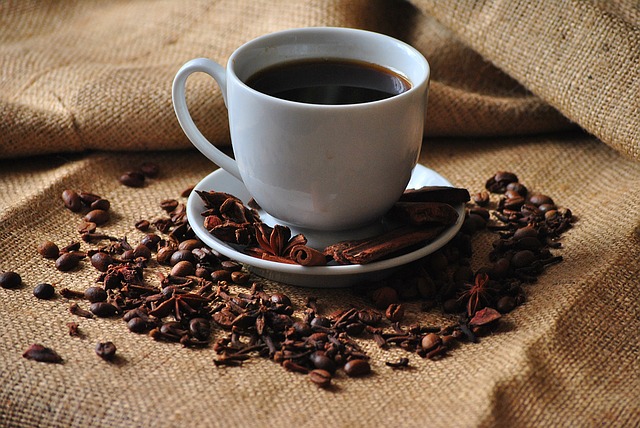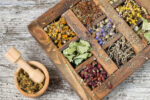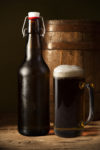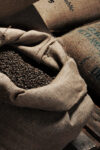
How to Roast and Boil Coffee
“Coffee affords very little nourishment, and is apt, if drank strong, to occasion tremors of the nerves. It is very bad for bilious constitutions. The calm, phlegmatic temperament can bear it. With a good supply of cream and sugar, drank in moderation, by those who exercise much and take considerable solid food, it may be used without much danger.”
Quote is from the book, “The Cook’s Own Book, And Housekeeper’s Register“, by N. K. M Lee.
INFORMATION BELOW FROM 1800s COOKBOOKS
TANNIC ACID IN COFFEE
Coffee is somewhat like tea in composition. It contains tannic acid, and therefore a tin coffeepot should never be used.
The flavor can be extracted from coffee by boiling it or by pouring boiling water through it. Coffee should not boil longer than three minutes, as much tannic acid is extracted by long boiling.
When freshly roasted, coffee has the best flavor. In this condition, it is crisp and emits a strong aroma.
BUYING COFFEE
Coffee it is best to buy by the bag, as it improves by keeping. Let it hang in the bag in a dry place and it loses its rank smell and taste.
It is poor economy to buy ground coffee, as it often has other articles mixed, and loses flavor by keeping after it is ground. If purchased, buy in small quantities, and keep in tightly covered jars or cans.
TO ROAST COFFEE
There are often little stones in coffee and of the same color; therefore, pick it over carefully. If you have no coffee-roaster, put it into a round-bottomed iron kettle, and let it be where it will be hot an hour or two without burning. Then put it where it will brown, and stir it constantly until it is done. If it is left half a minute, the kernels next to the kettle may be burnt black, and this is enough to injure all the rest. It should be a dark, rich brown, but not black. Before taking it up, stir in a piece of butter the size of a small nut. Put it, while steaming hot, into a box with a close cover.
In a small family, not more than two pounds should be roasted at once, as it loses its freshness by being roasted long before use. For the same reason, it should be ground as it is wanted. The practice of grinding up a quantity for two or three weeks is a poor one.
TO MAKE BOILED COFFEE
After scalding the coffee pot, put one-half cup cold water and one-half cup ground coffee into it. Stir well and then add three cups boiling water. Allow it to come to the boiling point and boil for 3 minutes. Pour a little of the coffee into a cup to clear the spout of grounds, add another half-cup of cold water, and put it back on the stove to reheat, but not to boil. When hot, serve at once. Never allow the liquid to stand on the grounds for any length of time, for the longer it stands the more tannic acid will be drawn out.
CLEARING COFFEE
As coffee made by boiling is usually somewhat cloudy, it may be cleared in one way or another. The last cold water is added for this purpose, for as it is heavier than the warm liquid, it sinks to the bottom and carries the grounds with it.
Coffee may also be cleared by stirring a small quantity of beaten raw egg, either the white or the yolk, or both, into the grounds before the cold water is added to them. One egg will clear two or three potfuls of coffee if care is exercised in its use.
If the egg shells are washed before the egg is broken, they may be crushed and added to the grounds also, for they will help to clear the coffee. The explanation of the use of egg for this purpose is that it coagulates as the coffee heats and carries the particles of coffee down with it as it sinks.
BOILED COFFEE ANOTHER WAY
Another very satisfactory way in which to make boiled coffee is to tie the ground coffee loosely into a piece of muslin, pour the boiling water over it, and then let it boil for a few minutes longer than in the method just given. Coffee prepared in this manner will be found to be clear and therefore need not be treated in any of the ways mentioned.
[Never substitute a woolen for the muslin strainer, as that fabric, being animal should never come in contact with heat; while cotton or linen, being of vegetable fiber, is easily washed clean and dried].
HOW TO MAKE STRONG COFFEE
If you wish to have really strong coffee, allow a cup of freshly-ground coffee to a quart of boiling water. Put the coffee in a bowl and wet with half a cup of cold water. Stir in the white and shell of a raw egg, and turn into a clean, newly-scalded coffee-boiler. Shut down the top and shake hard up and down half a dozen times before pouring in the boiling water. Set it where it will boil hard, but not run over, for twenty minutes. Draw to the side of the range and check the boil suddenly by pouring in a third of a cup of cold water. Let it stand three minutes to settle, and pour off gently into the pot which is to be set on the table. Scald the milk to be drunk with coffee, unless you can serve really rich cream with it.
BREAKFAST COFFEE
Cream, scalded milk, and block sugar are essential to good breakfast coffee. Put in one tablespoon of cream and two tablespoons of milk, and fill the cup three fourths full. Never fill to overflowing. Let each person add the sugar desired, unless you know the individual tastes of the family. The milk should be just hot, but never boiled, as boiled milk gives a very unpleasant flavor.
After-dinner coffee, or black coffee, is made using double the proportion of coffee; two heaping tablespoons of coffee to one cup of water. It should be very strong and perfectly clear. Served in small cups, with block sugar if desired, but not with cream or milk, as the milk counteracts the purpose for which the coffee is taken.
The addition of three tablespoons of whipped cream to a cup of coffee gives Vienna Coffee. An equal amount of boiled milk and filtered coffee is called Cafe au Lait.
CARE OF THE COFFEEPOT
The coffee should never be allowed to stand in the coffeepot, but should be turned out at once after using. If any clear coffee is left, it may be used for spice cakes, jellies, or other desserts. The coffeepot should be washed well, and scoured if necessary. The spout needs special care in cleaning.
=================================================
Do You Drink Coffee? Do You Have a Favorite Brand or Way of Making it? Please Leave a Comment Below.
=================================================




7 thoughts on “How to Roast and Boil Coffee”
Such exquisite photos!
Thank you. I followed your link to the historic cooking youtube channel. Looks interesting! I’ll be checking it out. Thanks for visiting.
I am a coffee drinker! My coffee cup is always near by and is refilled often. I have heard of putting egg shells in it but never knew why. Fun information in this, I’m sharing to Facebook and Pinterest.
Thank you for sharing. I have tried drinking coffee off and on over the years, but just don’t care for it. But I keep reading how good it is for you and a friend recommended bullet-proof coffee. That’s coffee with butter (I buy grass fed), and then I get a flavored stevia sweetener (hazelnut). Now I can drink it. I even grind my own beans!
I drink a cup of bulletproof coffee for breakfast every morning. And when I go to our favorite coffee shop I don’t have to tell them what I want because they already know.
I’m not really a fan of coffee – I’m more of a tea person but I do like the occasional coffee with a shot of hazelnut or almond flavouring.
I don’t drink coffee, either. I’ve tried it several times in the past, but didn’t like the taste. But I keep hearing about how healthy it is for you, so maybe I’ll try again.